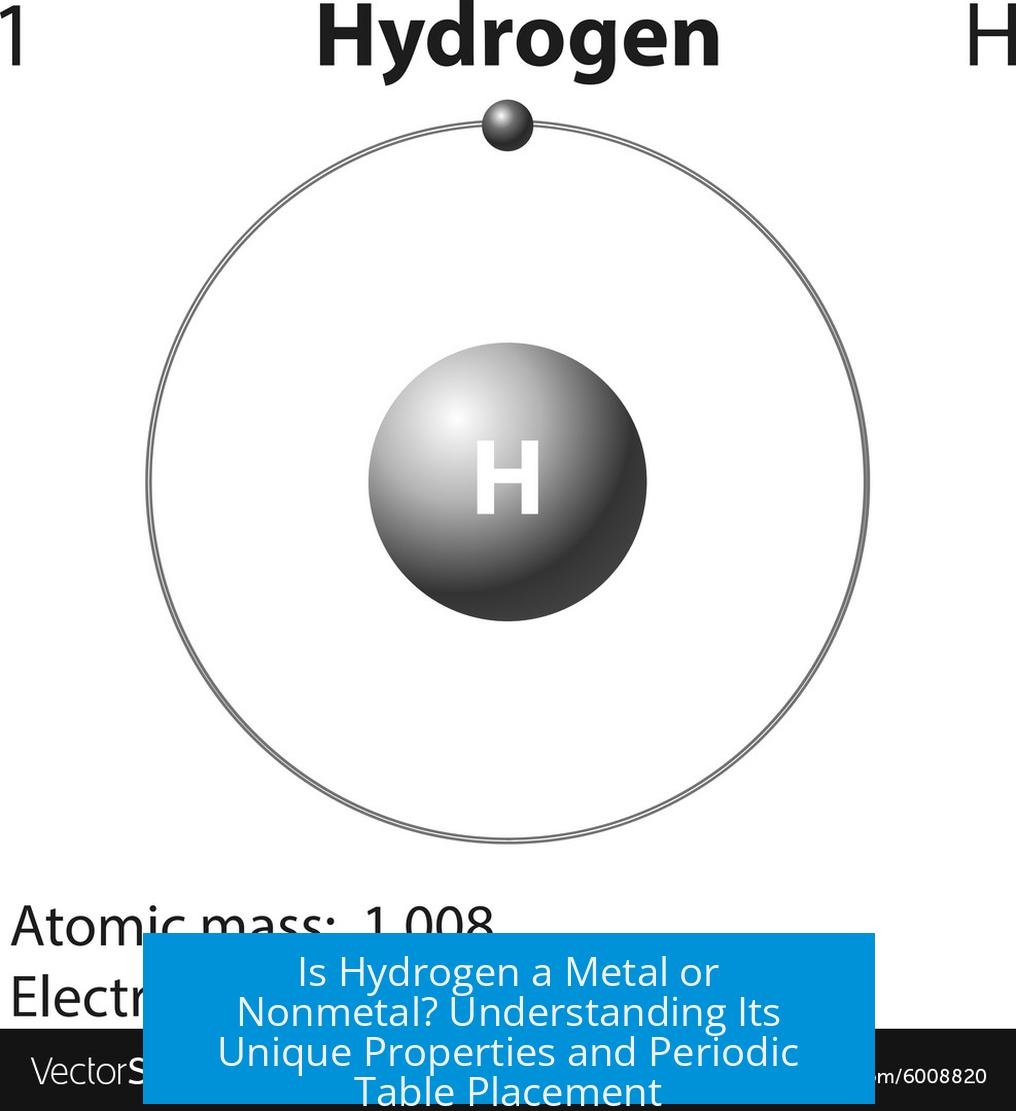Is Hydrogen a Metal or Nonmetal?
Hydrogen is primarily a nonmetal under normal conditions but can exhibit metallic properties under extreme pressure. It exists typically as a diatomic gas (H2) with covalent bonds. This nonmetallic behavior is why many periodic tables position hydrogen outside the traditional metal groups.
Hydrogen as a Nonmetal in Standard Conditions
At room temperature and atmospheric pressure, hydrogen forms H2 molecules with shared electron pairs. It behaves like other nonmetals by forming covalent bonds and lacks the free electrons that characterize metals.
- Hydrogen’s electron configuration favors sharing electrons rather than donating them.
- It does not conduct electricity or heat like metals.
- Hydrogen is often placed separately or above group 1 to indicate its unique nature.
Metallic Properties Under Extreme Pressure
When subjected to extremely high pressures, such as those near Jupiter’s core, hydrogen transforms into a liquid metallic state. This phase exhibits:
- Electrical conductivity typical of metals.
- A lattice structure where positive nuclei float in a sea of delocalized electrons.
- Shared characteristics with conventional metals despite hydrogen’s nonmetal status at standard conditions.
This phenomenon results from compression forcing hydrogen atoms so close that electrons delocalize, enabling metallic conductivity. However, this state is not naturally occurring on Earth and requires immense pressure unlikely in normal laboratory settings.
Metals and the Periodic Table Placement
Metals typically have atoms arranged in a lattice with free electrons, allowing electrical and thermal conductivity. Hydrogen’s classification isn’t strictly dictated by its periodic table position but by its properties. Its placement above group 1 indicates its ambiguous chemical behavior. Metals generally reside in groups 1, 2, and the transition metals, but hydrogen defies these categories.
Significance of Hydrogen’s Dual Behavior
This dual nature—nonmetallic at normal conditions and metallic under high pressure—does not affect everyday chemistry but illustrates the complexity of element classification. It underscores that the periodic table is a guide based on typical behavior rather than absolute rules.
Key Takeaways
- Hydrogen is a nonmetal at standard temperature and pressure.
- It forms diatomic molecules with covalent bonding.
- Under extremely high pressure, hydrogen becomes a liquid metal with metallic properties.
- Its position on the periodic table reflects its unique, hybrid nature.
- Metallic hydrogen is rare and exists naturally only in massive planetary cores.
Is hydrogen a metal or nonmetal at normal conditions?
Hydrogen is a nonmetal under normal temperature and pressure. It exists as diatomic molecules with covalent bonds between atoms.
Can hydrogen act like a metal under certain conditions?
Yes. Under very high pressures, such as near Jupiter’s core, hydrogen behaves like a liquid metal.
Why isn’t hydrogen placed clearly in one group on the periodic table?
Hydrogen doesn’t fit neatly into any single group because it has unique properties. Some tables place it floating above the middle to reflect this.
What defines a metal’s behavior compared to hydrogen?
Metals can be seen as nuclei in a sea of electrons. Hydrogen only displays this metallic behavior under extreme pressure, not at normal conditions.
Is hydrogen’s metallic state unique among elements?
No. Other elements can also become metallic under extreme conditions. This does not depend on their position in the periodic table.





Leave a Comment